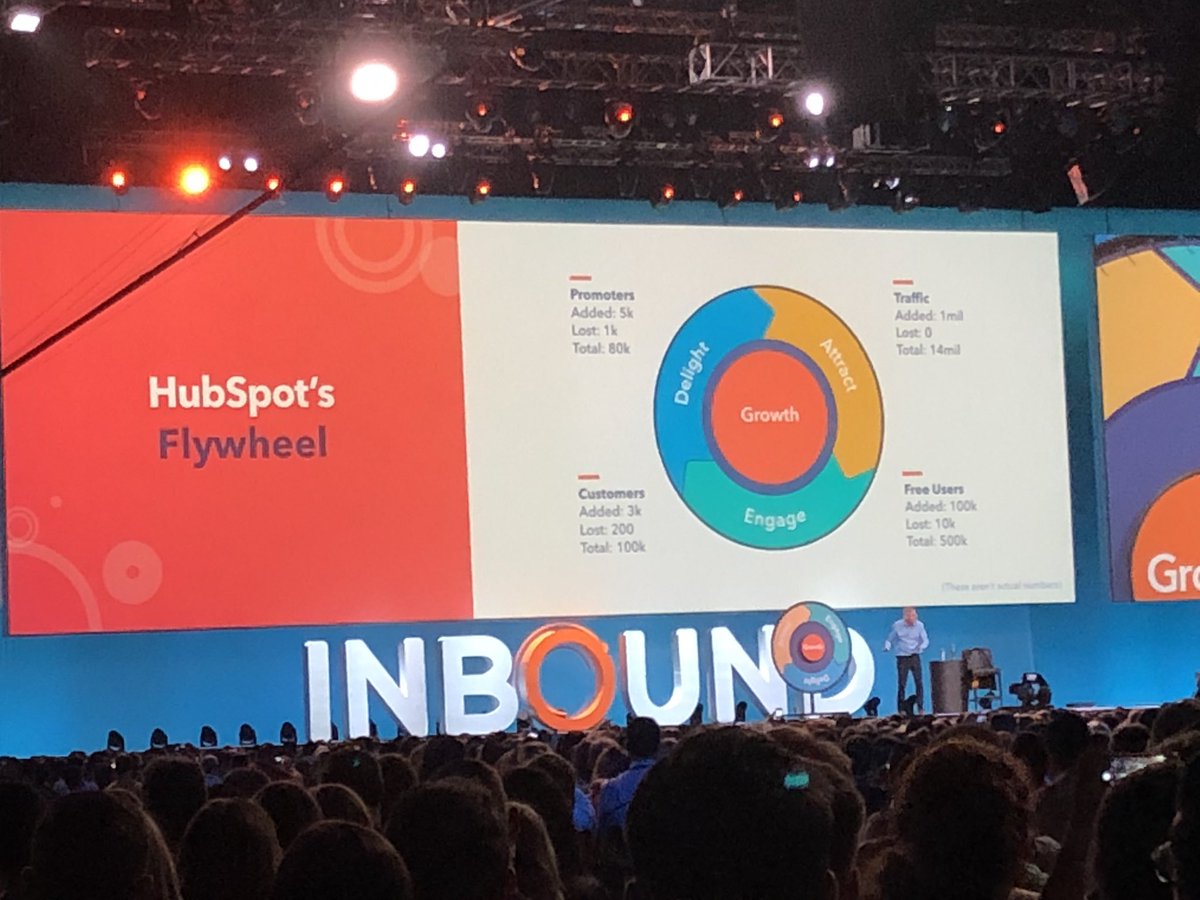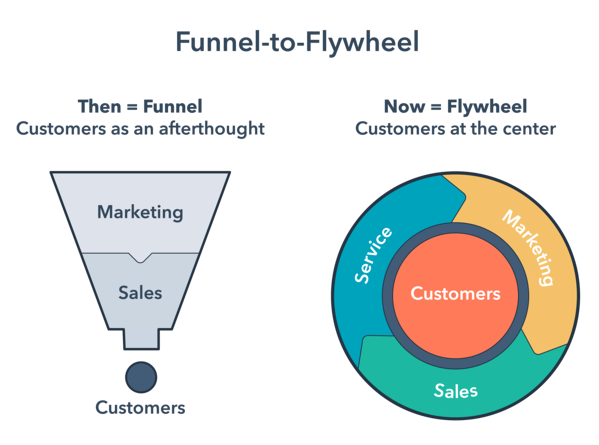What You Absolutely Have to Know About Inbound Marketing
Modern marketing techniques are complex and sometimes difficult to understand, but they work. In most cases, the word "modern" translates to...
4 min read
Mark Parent
September 13, 2019 1:06:01 PM EDT

For years, marketing has been dominated by one concept -- the sales funnel. This methodology for managing prospective customers and identifying legitimate sales targets has been the rock of an ever-changing industry. Moreover, a new model has emerged, keeping the positive aspects of the sales funnel, while significantly improving upon its facets and emphasizing the customer experience.
Analyzing the Sales Funnel
The sales funnel has served marketers very well for decades. Its efficiency in extracting motivated prospects from a litany of semi-interested shoppers is unparalleled. It is no wonder that the sales funnel has retained its popularity over the years. Simply put, it works.
However, by its very definition, there is one major flaw with the sales funnel -- things eventually fall out of the funnel. Once an individual is converted from a prospect to a customer, the funnel forgets about that person and moves on to the next batch of leads. In a world where repeat business and customer advocacy are more important than ever, any system that removes paying customers from consideration must be treated with caution.
The HubSpot Flywheel
If the problem with the sales funnel is that it eventually sheds itself of the very customers it once showcased, the solution is a model that prioritizes those individuals and ensures their satisfaction after the sale. The HubSpot flywheel, shown below, accomplishes this by placing the customer at the center of everything a business does.
Centering the customer in the flywheel model is not just a marketing gimmick. Any successful business knows that the customer must always be their top priority. The flywheel demands that all actions feed into customer activity and satisfaction. In this model, customers of all types -- old or new, frequent or seldom, high-end or budget-conscious – are continuously reminded of their significance to the company.
TALK TO AN INBOUND MARKETING & SALES SPECIALIST TO LEARN MORE ABOUT HOW THE NEW FUNNEL CAN HELP YOU AND YOUR BUSINESS.
On the outside of the flywheel are three phases, each one feeding directly into the next -- attract, engage and delight. These are three distinct emotions that customers feel along their path to purchase. The idea is that the wheel continues to spin and feed the customers in the middle. If the flywheel or any part of it fail, the customer is left isolated and will seek business elsewhere. However, if the flywheel is successful, the customer is thoroughly satisfied.

How it Works
Marketers know that customers need to be at the core of everything they do. Unfortunately, the customer can sometimes take a backseat to internal matters, such as miscommunication between departments and internal chains of command. Additionally, marketing misfires like targeting the wrong market segments or choosing inefficient marketing mediums can leave the customer un-nurtured. To avoid these issues, the flywheel aims to create a level playing field for the entire organization.
Sales, marketing, and service have traditionally been three separate entities within a business. When each operates in its own silo, it creates an environment that’s less than conducive to customer satisfaction. Because of those barriers, the information doesn’t travel freely between departments, and the overall marketing message is diluted. However, united by a common goal – to delight the customer at every turn – the flywheel has sales, marketing, and service join forces
HubSpot not only created the flywheel model, but it also implements the model into the heart of its business practices. Sales commissions are now directly related to the company’s ability to retain those customers. In other words, if the sales team doesn’t work with the marketing and service teams to ensure customer service excellence, then sales representatives lose money. Conversely, those who succeed in attracting, engaging, and delighting customers are paid at a higher rate. When employees are empowered to be stakeholders in the flywheel, they respond with passion, integrity, and compassion.
Force and Friction
A conventional flywheel only works with a forceful approach, meaning a wheel can’t turn without something pushing it. In this case, a steady flow of new customers helps to keep the flywheel going -- and those newcomers are consistently encouraged by current customers. The flywheel feeds directly off its own success and momentum. If the outside factors do their part to delight the customer, then the customer will have plenty of incentive to rave about their experiences to others.
Conversely, friction can diminish the flywheel’s ability to spin. Therefore, businesses using the flywheel model must work diligently to remove any barriers that interfere with the flywheel’s performance. Friction can exist internally and externally, and it’s up to each company to determine the friction’s source(s). This friction can be something as simple as a lack of effective communication between sales and marketing departments or it can be prospective customers having difficulty connecting with a live person when they call a customer service phone number. Friction, no matter how small, will hinder the flywheel’s motion forward
The Flywheel and Inbound Marketing
Given HubSpot’s reputation as an inbound marketing thought leader, it’s no surprise that the HubSpot flywheel pairs very well with an inbound marketing philosophy. The attract, engage and delight phases are virtually synonymous with the core tenets of inbound marketing. However, the phases must be in place for target customers to truly get excited about working with a business.
The creation of compelling and relevant content is of the utmost importance. E-guides, blogs, videos, etc. should be created in response to the major issues customers experience. It’s only through searching for solutions to these pain points that these prospects will be receptive to a solution.
This content will carry new prospects through the initial phases of the flywheel. Identifying a solution to their problems not only educates the customer, but it gives them a sense of who they’d like to work with in future instances. Because your business is now acting as a subject matter expert, it adds credibility to your marketing message.
When customers take the next step and become social media followers or sign up for an email list, it’s now easy for the business to engage directly with those customers. This takes the place of the traditional lead nurturing that took place on the sales funnel. The principle remains the same, but this time, emphasizes customer satisfaction. The content at this point should provide real value and solidify your business as the best option for that particular customer at this particular point in time.
The primary time to delight your customers is just before the start of the sale and right after the end of it. Timely, relevant content and communication will support customers after they make a purchase. Incentivizing those customers to recommend your business to others fuels the flywheel, all while keeping your current audience happy. The flywheel is as energized as ever, and it can attract even more customers through inbound marketing.
The HubSpot flywheel represents an attractive value proposition for any business. Its combination of inbound marketing, lead nurturing and customer excellence creates an enticing package that delights prospects, allowing businesses to function at a higher level than ever before.

Modern marketing techniques are complex and sometimes difficult to understand, but they work. In most cases, the word "modern" translates to...

The Internet has made it easier to reach more customers — on a faster basis and more cheaply. But that doesn't make connecting with customers or...

In a world where nearly every interaction happens online, consumers are more aware than ever of how companies market their products and services....